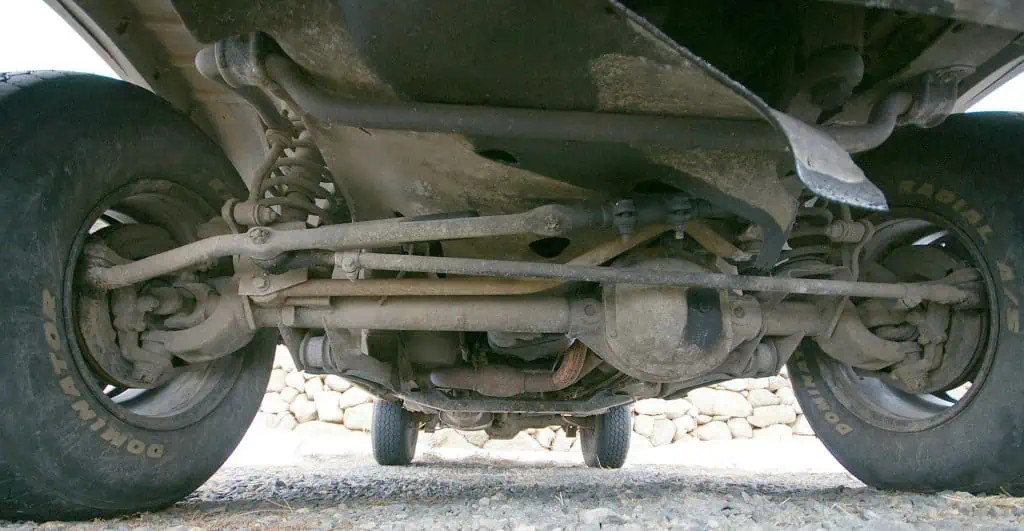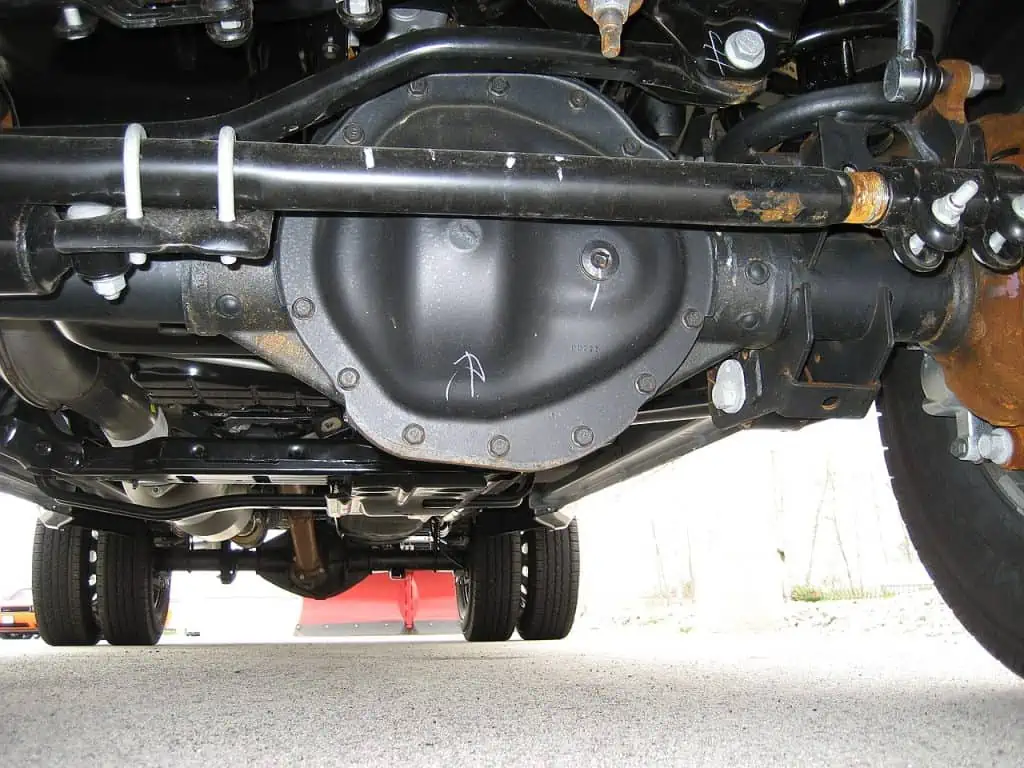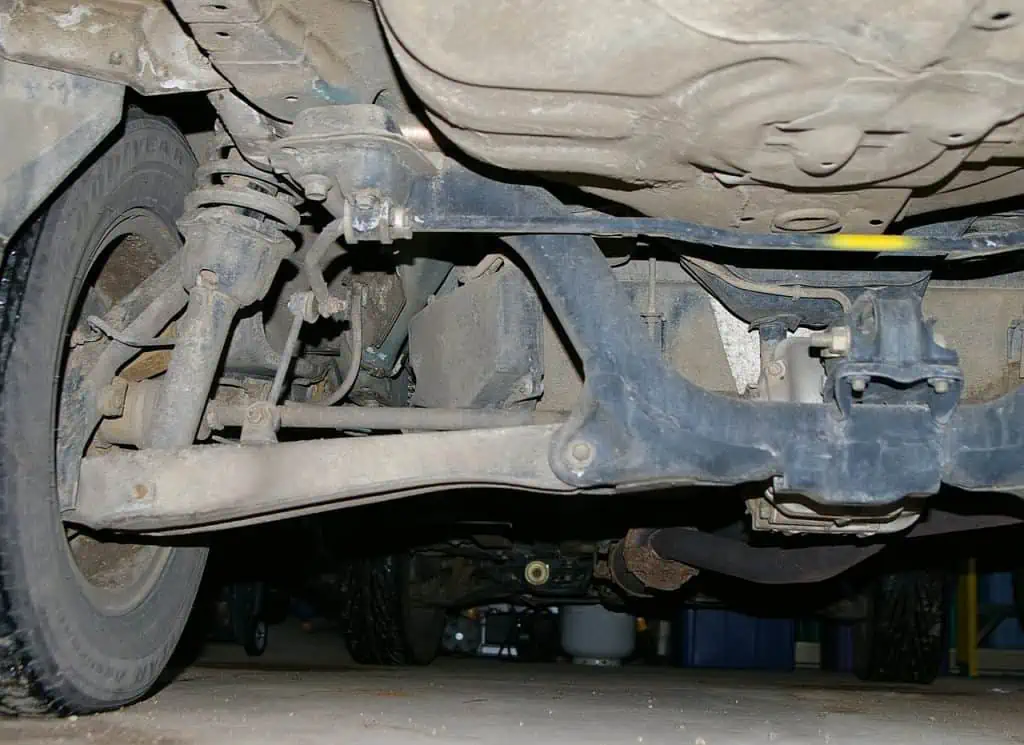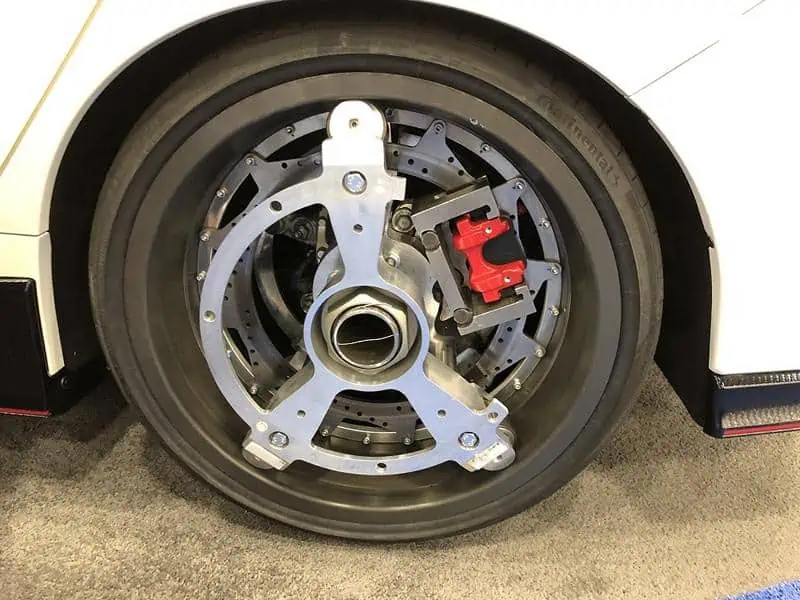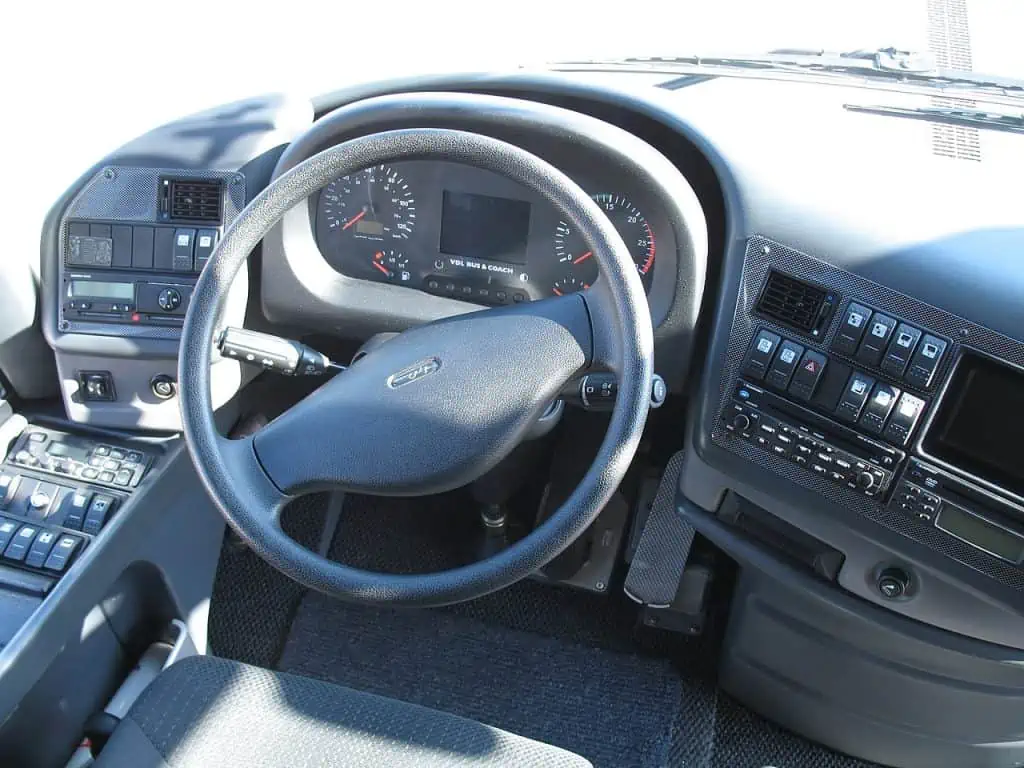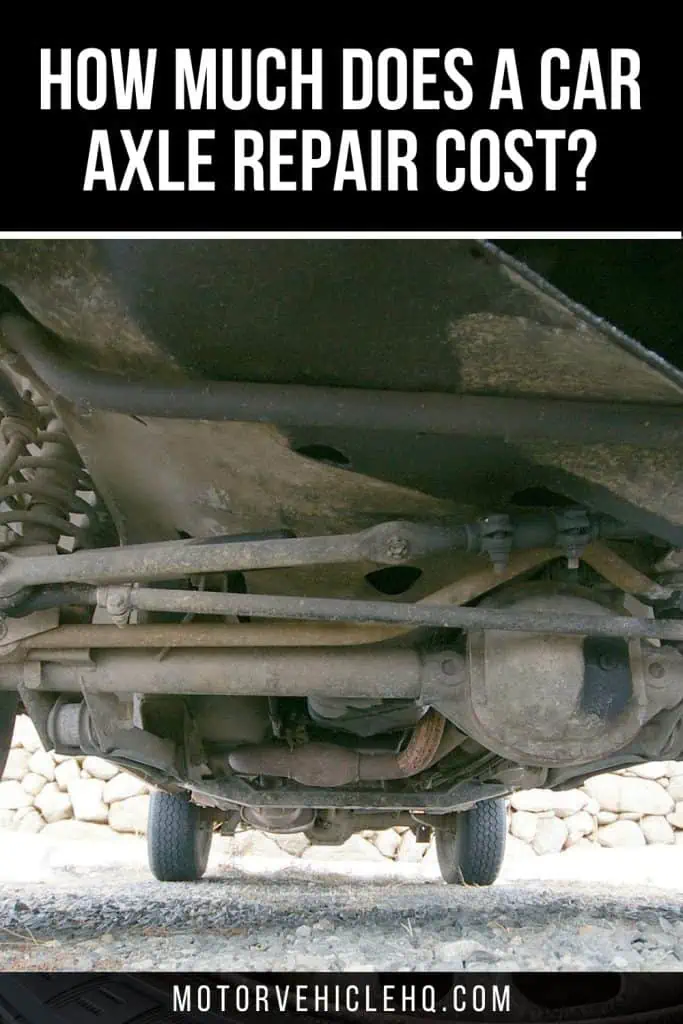As you crank the wheel, you can hear clicking. With each turn, its prominence increases. It’s first a little aggravating, but as time goes by, you start to worry about what’s wrong with your car. There is horrible news. The cause of this issue is rather significant, and you may need to think about doing an axle repair.
When you disregard a potential issue with a car’s CV axles, you endanger many lives—including your own—because they are essential to accelerating and driving.
When you take your automobile to the shop for this issue, the specialists will probably thoroughly inspect the axles. This is typically the root of the problem. You can do it yourself, though it’s best to leave axle repair in the hands of experts who will do the job well (and avoid damaging your automobile).
It’s not as difficult as it seems, so don’t worry. We are available to lead you in the proper direction. But first, let’s go into more detail regarding the warning signals that your car’s axle needs to be repaired or replaced.
A Car Axle: What Is It?
A simple yet incredibly crucial component of your car is the axle. When wheeled vehicles were first manufactured in the past, an axel was merely a straight bar with two wheels attached to either end.
Today, a working axle is also important for your vehicle’s steering and brakes to be in good alignment with its wheels.
For your car’s wheels to turn, the axle must turn. Your car’s axle drives the wheels by transmitting power from the engine and torque from the transmission.
This entire system consists of several parts, including things like suspension, from driveshafts to transaxles, depending on the type of vehicle you have.
Splines on a front drive axle by Specious / CC BY-SA 3.0. If the heat treatment procedure is not properly carried out when the axle is manufactured, the metal in the axle may have weak spots that are susceptible to bending and breaking at considerably less pressure than they should be able to withstand normally.
However, the axle’s primary function is to enable the wheels to move in tandem with the force generated by your engine. Your vehicle won’t move if the axle is broken.
Which are the Different Kinds of Axles?
A car has three different kinds of axles.
1. The Rear Axle
The rear axle transfers power between the differential and the driving wheels, where it is located. The differential joins the two half shafts that make up the back axle. In the majority of cars, the wheels and the rear axles revolve in unison.
2. The Front Axle
When a car is driven over uneven ground, the front axle-regulated steering carries the weight of the front end and cushions the impact.
3. The Stub Axle
The car’s front wheels are mounted on stub axles.
The front and rear axles are in charge of rotating the wheels. Cars typically just have the front and rear axles, while larger vehicles may have more.
What are the Common Bad Car Axle Symptoms?
The axles in your car should preferably be silent and smooth. Your car’s axles could be harmed by several things. The most frequent cause would be some sort of accident- or impact-related damage.
Either you collided with something, hit another vehicle, or perhaps tripped over several potholes or speed bumps.
Or perhaps there is some debris on the road. Since the axle is directly over the ground, it is susceptible to damage or bending from any uneven surfaces.
Though uncommon, the bent axle could also be the result of a manufacturing fault. The metal needs to be heat treated appropriately when the axle is constructed to prevent weak places from appearing. As a result, the axle is susceptible to typical wear and tear, which could eventually cause it to fail.
For instance, the legendary automaker Ford was forced to recall more than 30,000 F-250 and F-350 trucks in 2012 as a result of a problem with the rear axle shaft.
In a separate occurrence, General Motors (GM) issued a recall for over 250,000 Pontiac, Saturn, and Cadillac automobiles that required rear axle repair because the seal on them was leaking. As a result, the vehicles would veer off course and collide.
This puts the axle’s integrity in danger from external damage combined with potential production mistakes. In any case, see if you’ve ever experienced these symptoms. If so, it’s time for a quick fix:
1. Driving Unevenly
Your vehicle’s alignment will be significantly worsened by a bent axle. For your axle to function correctly, it must be governed straight. Your vehicle’s two-end wheels are no longer correctly aligned when the axle shaft becomes deformed.
A live axle in a Jeep by Hustvedt / CC BY-SA 3.0. Another possibility for the bent axle is a manufacturing defect. To avoid weak spots developing, the metal must be heat treated properly when the axle is built. The axle is therefore vulnerable to normal wear and strain, which could eventually lead to its failure.
As a result, even if you maintain a straight line with the steering wheel, your car will wobble or drift to one side while you are driving. Finding the offending wheel while you’re driving can be challenging.
When this occurs, the best course of action is frequently to continue driving while someone else examines your car to determine which wheel appears to be out of alignment.
2. Leakages
Your axles’ ends, next to the wheels, have joints there referred to as CV joints. The grease that keeps them lubricated will flow out when they are damaged.
As opposed to typical oil leaks, these will be concentrated exactly around the wheels to let you know that we’re dealing with a CV joint and not just another oil leak.
There is very probably a leak in your CV joint if you can see oil or grease on the tires themselves or pushing in that direction. All you have is a shirt. before the damage worsens and the lubrication is completely lost.
3. Abnormal Shaking and Vibrations
There may be an issue with your axle or your vehicle’s alignment if your ride has started to become noticeably bumpy while you’re driving, particularly if you’re feeling vibrations in your hand from the steering wheel.
Since you are aware that there is no need for your steering wheel to vibrate, this is a good indication that you should get it checked out as soon as possible.
4. Weird Sounds
If you hear strange clunking or clicking noises while driving, your wheels may be out of alignment due to a bent axle. The noise is probably being produced by pieces rubbing against one another.
If your axle is damaged, a loud ticking sound will be present, especially when you are turning. This happens because the joints are sloppy and collide when you turn. It will probably be louder if you turn more abruptly or quickly.
5. Complete Failure
So far, we’ve identified the signs of an axle that is bent but still functional. You will become aware of the bend in the axle becomes too severe or completely breaks. If the axle is entirely damaged, your automobile won’t be able to move at all.
As the axle is no longer able to adequately suspend your vehicle above the ground, it’s also probable that you will have collapsed either the front end or the back end where the axle broke.
What are the Main Causes of a Car Axle Going Bad?
As we previously mentioned, a damaged axle is relatively uncommon in the context of auto repairs. Your axle could become enough damaged in a few different ways that it would need to be changed, and not all of them are as evident as you might assume.
An axle on a RAM 3500 vehicle by Dana60Cummins / CC BY-SA 3.0. The differential, which is placed on the rear axle, distributes power to the driving wheels. The two half shafts that make up the rear axle are joined by the differential. The majority of automobiles have synchronized rotation between the wheels and the rear axles.
1. Damages Due to Collisions During Accidents
Accident damage is one of the more obvious reasons why your axle might be having issues. Your axle may have suffered damage that you were not aware of at the time of the collision if you were impacted by another car.
2. Speed Bumps and Potholes
Road hazards like potholes and speed bumps are one of the most frequent reasons for axle damage. You may strike them before you realize how dangerous they are, and there is nothing you can do to fix the issue after the fact.
A water-filled pothole, in particular, can appear innocent enough on a rainy day before the tire hits it and sinks completely if it is deep enough. That may cause your car to become unbalanced enough for your axle to strike the ground with the weight of your complete vehicle on top of it.
Inadequately designed speed bumps or running up against the curb occasionally can result in the same outcome. Depending on what you ran over, you might potentially trigger a similar effect if you run over some rubbish on the road.
3. Errors In Manufacturing
The one cause of an axle issue that few drivers consider is that the axle may have been defective when it was initially placed in the vehicle.
Despite the rarity of the situation, it has happened before. Ford voluntarily recalled around 30,000 F-250 and F-350 trucks in 2019 due to a potential accident-causing flaw in the rear axle shaft.
This was attributed to inappropriate handling of the materials during the cooling phase of the supplier’s production of the axles.
The issue is that the axle should be a highly straight piece of metal that is heat treated to make it rigid and sturdy.
The metal in the axle may have weak places that are vulnerable to bending and breaking under much less pressure than they should be able to withstand ordinarily if the heat treatment process isn’t carried out properly when the axle is built.
You will be notified of the issue and it should be rectified without any additional cost to you if the axle in the car you’re driving has a problem, and the manufacturer initiates a recall.
If this occurs in a new model, you might not notice a problem until it’s too late because it sometimes takes multiple complaints from unhappy drivers who have experienced these kinds of failures before a recall will be issued.
A manufacturing flaw in an axle can’t, regrettably, be predicted or detected before the axle fails on you.
What Is the Lifespan of a Car Axle?
Axles are normally covered by the manufacturer’s powertrain warranty, which should give coverage for at least 4 to 5 years and 50,000 to 60,000 miles.
The subject of the axle’s durability after the warranty period has passed now arises. Its longevity may be influenced by a few different things.
A multi-link type rear independent suspension on an AWD car by Hustvedt / CC BY-SA 3.0. Inspect additional parts while working on the axle. Other suspension parts, such as the brakes, can be checked for damage. When the automobile is on stands and the wheels are removed, it only makes sense to perform two fixes back-to-back.
Driving over rocky or dusty terrains can shorten an axle’s lifespan since there is a greater likelihood that the protective rubber boot will be harmed.
The same is true when driving in snowy or icy conditions, as sand and salt can harm the rubber. The rubber may occasionally dry out and break, which also has the same result.
If a CV axle is destroyed, a fascinating subject that comes up frequently is whether the transmission will become worn out.
A failed axle can undoubtedly harm the transmission because it is directly related to it. A broken axle may cause the inner parts to wear out considerably more quickly than they normally would if it moves too much.
How Much Is the Cost of a Car Axle Repair?
The various axle varieties have already been addressed. The price of axle repair varies from the rear to the front. An average front axle repair will set you back roughly $550. Rear axle costs are slightly higher; they typically cost $800. The price of axle repair varies by vehicle type, make, and model.
1. Axle Repair Costs for Bent or Broken Axles
A broken or bent axle typically has to be replaced. These expenses cover both labor charges and the cost of the parts. However, the county or state where you live will impose some additional taxes.
2. The Cost of Front Axle Repair
Before fees and taxes, the cost of front axle repair ranges from $500 to $600. Once more, prices vary according to the manufacturer, brand, model, and size of the car. According to how long it takes to complete the job, labor charges can range from $50 to $140.
3. The Costs of Rear Axle Repair
The majority of the cost of rear axle repair is made up of relatively pricey parts. Budget somewhere between $700 and $900. Labor costs range from $50 to $70.
How Much Does a DIY Axle Repair Cost?
Good news for DIY fans and frugal people! You can change an axle at home, but you’ll need to be familiar with a few power tools.
The cost of axle repair decreases dramatically if you already have most of the necessary equipment set up at home. You can typically purchase a brand-new axle for less than $100 from online retailers and parts stores.
The supplies you will need are listed below. Although it is not necessary, an impact wrench will undoubtedly make the operation much simpler.
Additionally, since you won’t have to worry about overtightening the axle nut, having one on hand is safer. A bearing guide for axle repair can also be beneficial.
A typical car wheel by Ayozek / CC BY-SA 4.0. The wheels may be out of alignment due to a bent axle if you hear odd clunking or clicking noises while driving. Pieces rubbing against one another are likely what is making the noise.
Set of Equipment Required
- Vehicle toolkit: a screwdriver, pliers, and sockets
- A jack
- The jack stands
- A prying bar
- A breaker cleaner
- The fluid lubricant
- A Hammer or a mallet
- An Impact wrench
Replacement of an Axle
The described procedure is a general how-to for changing an axle. Because there are variations between models and makes, as has been mentioned numerous times before, your car may be somewhat or significantly different. To make sure you’re doing it right, see your owner’s manual.
You will notice that we once advise removing the axle nut with an impact wrench. However, if the car is on the ground, it is better to do it by hand.
In this instance, the car must be jacked up after finishing step 5. For a quick overview of axle replacement, you can get to YouTube and watch the tutorial videos as well.
1. Taking Out the Axle Nut
- Verify that the car is in “Park” mode.
- Lift the vehicle and remove the wheel from the side or sides where the axle needs to be changed.
- Look for the axle nut. The exact center of the hub or wheel assembly, depending on whether the wheel was removed, is where it is.
- Some automobiles use a cotter pin to secure the axle nut. To position the pin for easy removal, use pliers. If it is corroded or stuck, you can give it a spray of lubrication.
- The axle nut must now be released. Because it occurs with some car types, don’t lose motivation if it takes some time to complete. If you are unable to achieve this, lower the automobile and complete the task before jacking it up. This is the opportunity for the impact wrench to work a little magic for you. It can assist you in properly removing the axle nut without damaging your car with a breaker bar.
2. Removal of the Tie Rods, Brakes, Steering Knuckle, and Struts
- Now, carefully remove the blots, locking the brake caliper brackets into place. Keep the caliper from dangling from the brake line. Instead, fasten the caliper with any little hook or carabiner. Additionally, this relieves the line of extra pressure.
- Remove the fasteners holding the outer tie rod and steering knuckle together. Look to see whether there are any extra pins. If so, straighten them out with the pliers. Sometimes the process won’t be so simple. To loosen it up, get out the hammer or mallet and give it a couple of mild knocks.
- Remove the bolts while holding the hub against the strut tower. As you remove the hub, you must prevent the nut from rotating.
A car’s steering wheel by Lukas 3z / CC BY-SA 4.0. If your ride has started to get visibly rough while you’re driving, especially if you’re experiencing vibrations in the hand from the steering wheel, there may be a problem with your axle or your vehicle’s alignment.
3. Axle Removal and Replacement
- Check the line from the axle to the transmission to see where it joins. Pry out the CV joint and axle with a pry bar. The axle should now easily detach at this point. While probing, you can find a leak of transmission fluid. Although this is typical, we advise you to put up a pan or tray to capture the moisture.
- Replace the old axle in the joint (transmission axle) by inserting the new one. To carefully drive the axle into position, use a hammer or mallet covered in a towel.
- Bolts are used to attach the new axle to the hub. In this order: Hub/Strut tower, Tie rod, knuckle, and Caliper
- Axle nut replacement. Here, an impact wrench will come in handy because it can enable you to securely tighten the nut. If you don’t have one, when it’s on the stands, tighten the nut as much as you can without pulling on it.
- Replace the wheel. You’re almost finished; now lower the car. If necessary, now is the time to tighten the axle nut. Pushing on a bar or wrench to tighten the nut won’t result in the car collapsing, so go ahead and do it.
An Axle Replacement Guide
Check out some advice on how to replace the axle in the best possible way.
- Use the flattest surface you can locate if you don’t have a garage to perform this task. If your work area is sloping, it is impossible to properly raise the automobile on jack stands.
- To protect yourself while working on these crafts, put on gloves and safety goggles. There are plenty of chances to harm yourself.
- Before beginning, read the directions several times. Additionally, carefully read your owner’s manual to see if any instructions could affect the procedure. The benefit of reading the process several times is that you are familiar with it at this point and can tell whether any parts make you uncomfortable. If it does, you should delegate this task to a specialist.
- Your car will suffer if you start anything only to decide halfway through that you lack the willpower to finish it.
- When working on the axle, examine other components. You can also inspect the brakes and other suspension components for damage. It only makes sense to carry out two fixes back-to-back while the car is on stands with the wheels off.
Safety Advice
Along with the obvious mess that you will make while working on your car, it’s fairly risky. We must first make sure you don’t lose a finger, get disfigured, or pass away (yes, sadly, that is a possibility). Be careful!
- To keep the clutter to a minimum, a level surface will be ideal.
- When the car is on axle stands, don’t shake it or pull on the wheels. If you really must tighten the axle nut, first lower the car to the ground so you can use the wrench risk-free.
- When reassembling the car, make sure you don’t forget any nuts, bolts, or other parts. A failing axle-like risk will arise from not doing it correctly.
Car alignment is necessary for easy steering by Mike Peel / CC BY-SA 4.0. A bent axle will significantly worsen your car’s alignment. Your axle needs to be governed straight to operate properly. When the axle shaft deforms, your car’s two-end wheels are no longer properly aligned.
Does Insurance Provide Coverage for Axle Repair?
Many axles can last the lifespan of the vehicle if properly maintained. Although normal repairs are not covered by insurance, axle repair may be. But if the axle was harmed by a protected item, that might be the case.
If a motor accident led to the axle breaking, policies with collision coverage may cover the axle repair. Even severe weather is covered by a few policies. Get a great rate on a policy, but be sure it covers a variety of ailments.
What Duration Does an Axle Repair Take?
We’ll presume that since your car has two axles, just one has to be changed. Depending on whether you require any further repairs in addition to the axle itself, the total repair should only take 30 minutes to two hours.
This is the amount of time the technician spends working on the vehicle; however, if they are extremely busy, they could need to keep your car in for an entire day.
Remember that it will take some time to diagnose the issue that will cause this as well. Check your CV joints, brake pads, calipers, and anything else to ensure that the collision hasn’t caused additional broad damage.
Is Driving On a Broken Axle Safe?
For the most part, your car’s axle is a solid piece of metal. When it does bend, there’s a strong possibility it will only be a small bend and barely alter your vehicle’s overall alignment.
Although you will notice the symptoms we stated, they won’t prevent you from trying. You pull one way or the other due to the steering wheel’s tremor and the wheels’ wobbling.
The fact that you can still drive while having this issue does not mean that you should. A bent axle is more likely to shatter the longer you continue to exert pressure on it.
A catastrophic axle failure while driving could result in a serious collision that harms you or other people. Additionally, the possible damage may wind up costing you far more money.
You won’t be able to control your car if the axle breaks while you’re driving. The risk is not worth it. On an ice road, you still have a chance to regain control if you lose it. From that point on, there is little you can do if your axle breaks.
The Conclusion
A broken axle is one of those things that are difficult to predict and that most drivers don’t prepare for.
Being a careful driver and making sure you’re avoiding any visible road hazards, like debris and obvious potholes, is the only way to proceed to keep your automobile axle safe and secure.
Being a defensive driver is your best bet because most axle damage is caused by collisions, either with other cars or random objects on the road.
Beyond that, likely, you won’t be able to control this since, as we said, you can’t forecast a manufacturing error or the actions of other drivers who can end up colliding with you and triggering an accident that will destroy your axle.
Simply be mindful of your surroundings, drive carefully, and, if there is any real damage, get it corrected as soon as you can to prevent more collisions.
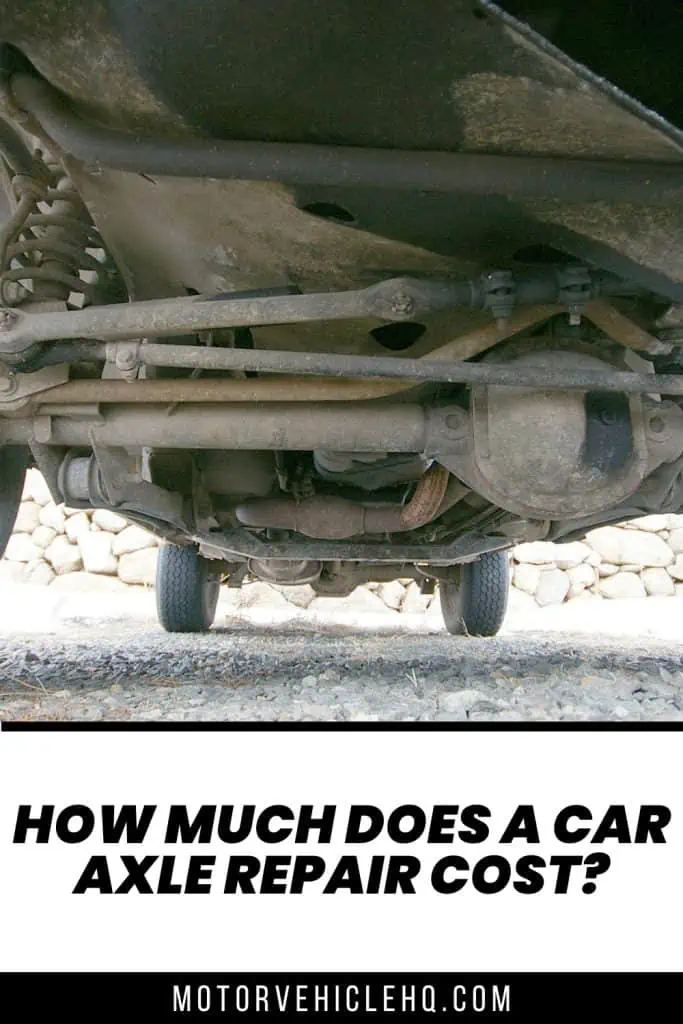
A live axle in a Jeep by Hustvedt / CC BY-SA 3.0

Jim Wicks is the founder of MotorVehicleHQ. With over two decades of experience in the automotive industry and a degree in Automotive Technology, Jim is a certified car expert who has worked in various roles ranging from a mechanic, car dealership manager, to a racing car driver. He has owned more than 20 cars over the past 15 years. Ask him about any vehicle you see on the road and he can tell you the make, model and year. He loves the aesthetics of all things cars, and keeps his vehicles in pristine condition.
In his free time, Jim enjoys getting his hands dirty under the hood of a classic car or taking long drives along the country roads. His favorite car? A 1967 Shelby GT500, a true classic that, according to Jim, “represents the pure essence of American muscle.”

